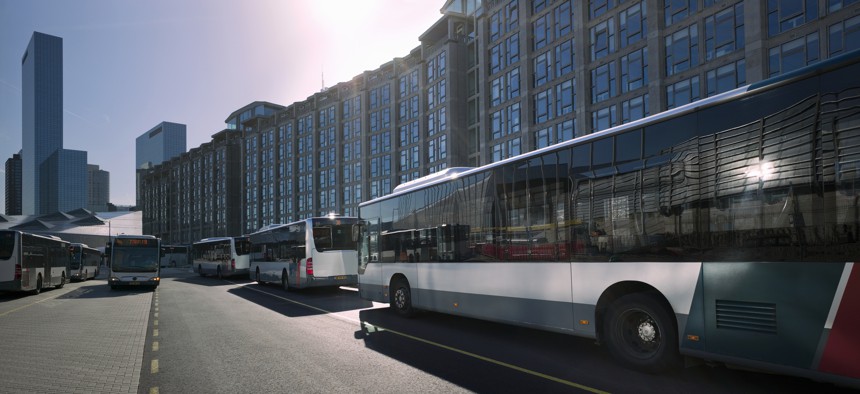Automated buses will still need skilled human operators

EschCollection / Getty Images
Even as buses incorporate more automated features, the complexity of driving near pedestrians and in changing weather will require trained human operators, a new report says.
As cities investigate driverless public transportation, researchers caution that heavy-duty passenger vehicles such as buses will still require the presence of a human operator.
Commercial automated passenger vehicles like Tesla’s cars have become more capable and sophisticated in recent years, but transit vehicles still face technical and operational challenges and have not been sufficiently tested for passenger safety, according to a report from Traffic21, Carnegie Mellon University’s in-house transportation research institute.
Currently, partially automated systems like forward collision warning, blind spot detection, lane keeping, pedestrian detection and automatic emergency braking are available for public transit vehicles. However, the researchers said that automated systems are challenged when operating in complex urban environments that require subtle interactions between drivers, pedestrians, cyclists and police directing traffic. Common methods of communication on the road, like hand signals from cyclists and eye contact between drivers and pedestrians, do not have a parallel mechanism in autonomous vehicles, the report said.
Existing technology, like LiDAR, measures distances and helps software build 3D maps for enhanced detection of obstacles, but it is less effective during rain and snow. Radar has a limited field of view, and cameras can be blinded by certain light conditions. Furthermore, any technology that relies on GPS will require regular updates and reliable connectivity.
As automation of public transit advances, Traffic21 recommended that regulations and safety requirements be grounded in data and that communications infrastructure be improved to ensure information on automated transit systems can be collected, analyzed and monitored.
Public transit authorities must preemptively consider safety and train their operators to effectively work with automation technologies before they are incorporated into fleets, the report said. Additionally, the U.S. Department of Transportation should study the added work tasks and potential stresses that bus drivers would face if they transition to roles where they are supervising automated operations and taking over in an emergency.
Local transit authorities, working with frontline employees and their unions, should conduct their own hazard analyses as part of their Public Transportation Agency Safety Plan, the report recommended.
“Given the current state of vehicle automation and the heightened complexity of driving near many pedestrians and in various environmental conditions, trained human operators will likely be needed as increasing levels of automation are introduced to transit busses and vans,” the report said.
“Robotic buses, no matter the level of automation achieved, cannot replace skilled operators who are there to keep our passengers safe during the challenging and unpredictable operating environment in public transit," Transport Workers Union of America President John Samuelsen said in a statement. "A driverless bus can't intervene with an unruly passenger or go off-route during a security or weather emergency."





